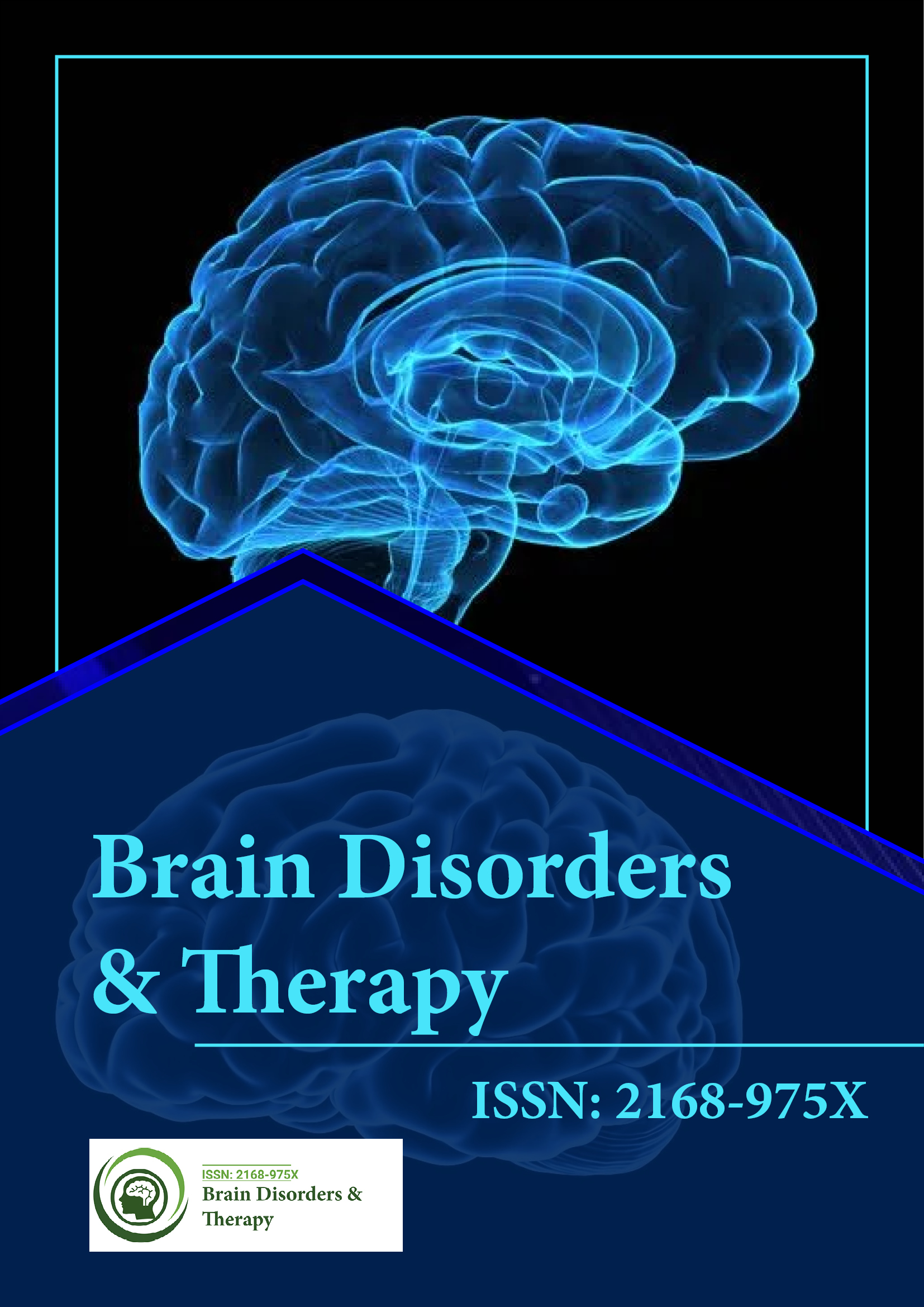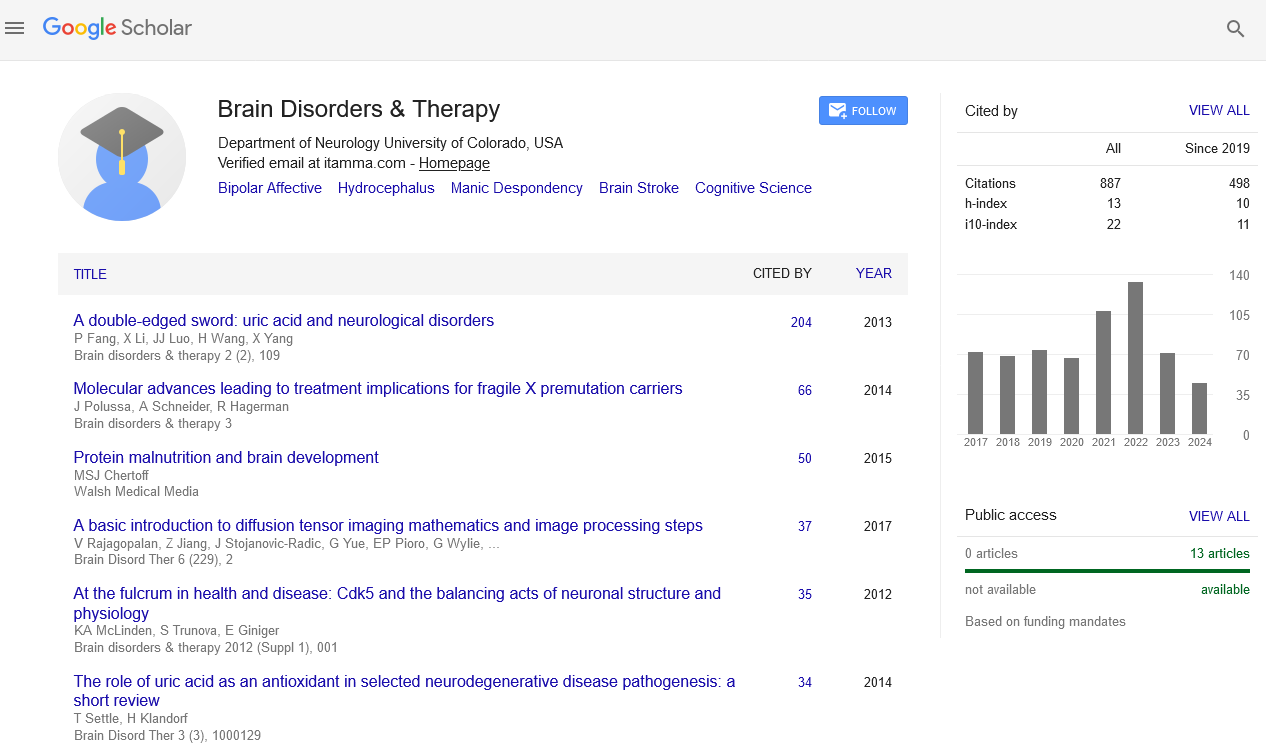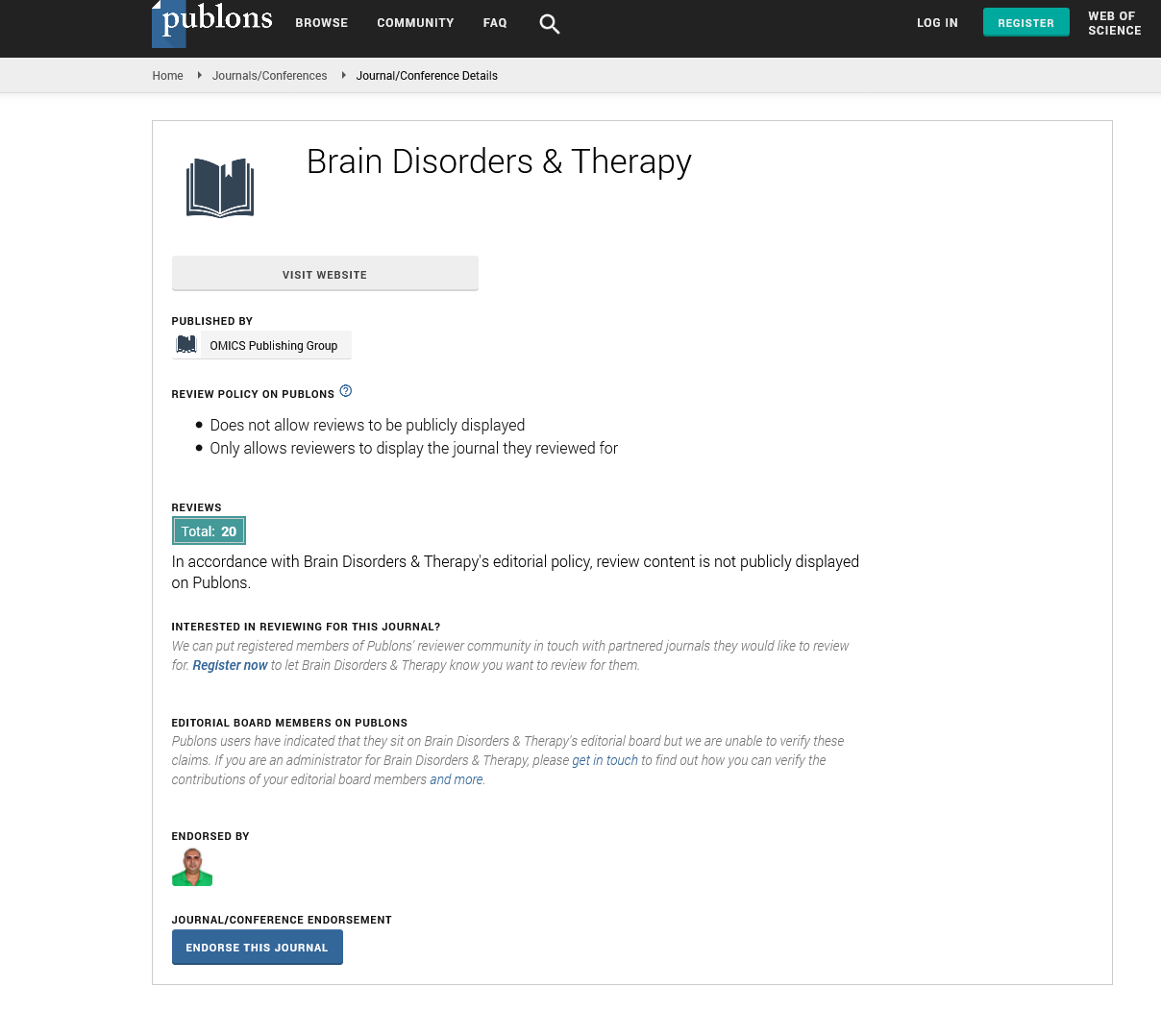PMC/PubMed Indexed Articles
Indexed In
- Open J Gate
- Genamics JournalSeek
- JournalTOCs
- RefSeek
- Hamdard University
- EBSCO A-Z
- OCLC- WorldCat
- Publons
- Geneva Foundation for Medical Education and Research
Useful Links
Share This Page
Journal Flyer

Open Access Journals
- Agri and Aquaculture
- Biochemistry
- Bioinformatics & Systems Biology
- Business & Management
- Chemistry
- Clinical Sciences
- Engineering
- Food & Nutrition
- General Science
- Genetics & Molecular Biology
- Immunology & Microbiology
- Medical Sciences
- Neuroscience & Psychology
- Nursing & Health Care
- Pharmaceutical Sciences
Association of contextual cues with morphine reward changes neural and synaptic plasticity in the ventral hippocampus of rats
6th International Conference on Brain Disorders and Therapeutics
September 13-15, 2018 | Copenhagen, Denmark
Mina Sadighi Alvandi, Judith Homberg and Yaghoub Fathollahi
Donders Institute for Brain, Cognition and Behaviour - Radboud University Medical Centre, Netherlands
Tarbiat Modares University, Iran
Scientific Tracks Abstracts: Brain Disord Ther
Abstract:
Drug addiction is associated with aberrant memory and permanent functional and structural changes in neural circuits. It is known that exposure to drugs like morphine is associated with positive emotional states and reward-related memory. In animal models conditioned place preference (CPP) paradigm is a behavioral model used to study the rewarding and aversive effects of drugs. By associating the rewarding effects of drugs with contextual information, this paradigm allows the assessment of drug-related emotional memories. Adult neurogenesis, the generation of neuronal precursors, is restricted to a very limited set of brain regions including subventricular zone (SVZ) of the lateral ventricle wall and subgranular lining of the hippocampal dentate gyrus. Dendritic spines have been considered as essential components for neuronal connectivity and synaptic plasticity. Neurogenesis and spinogenesis participate in hippocampal functions like learning and memory. However, the underlying mechanisms in terms of neural plasticity in the ventral hippocampus, a region involved in associative memory and emotional behaviors, are not fully understood. Therefore, we measured adult neurogenesis, dendritic spine density and brain-derived neurotrophic factor (BDNF) and TrkB mRNA expression as parameters for synaptic plasticity in the ventral hippocampus. Male Sprague Dawley rats were subjected to the CPP paradigm and received 10 mg/kg morphine. The rats were used to evaluate neurogenesis by immunohistochemical markers Ki67 and doublecortin (DCX). Golgi staining was done to measure spine density and real-time quantitative reverse transcription-polymerase chain reaction to assess BDNF/TrkB expression levels. We found that morphine-treated rats exhibited more place conditioning as compared with saline-treated rats and animals that were exposed to the CPP without any injections. Morphine induced CPP significantly increased the number of Ki67 and DCX-labeled cells in the ventral dentate gyrus. Additionally, we found increased dendritic spine density in both CA1 and dentate gyrus and an enhancement of BDNF/TrkB mRNA levels in the whole ventral hippocampus. In conclusion, we show that morphine-induced reward-related memory is associated with neural and synaptic plasticity changes in the ventral hippocampus. Such neural changes could underlie context-induced drug relapse.
Biography :
Mina Sadighi Alvandi is a PhD candidate at the Radboud University, Nijmegen. Her research interest is in drug addiction. Through the use of behavioral, molecular and electrophysiological methods she studies the effects of the drug morphine on neural plasticity and neural activity of the hippocampus. She also has experience in electroencephalography from rats with absence epilepsy. She published more than 10 papers in the field of Neuroscience.
E-mail: mina_sadighi@yahoo.com


